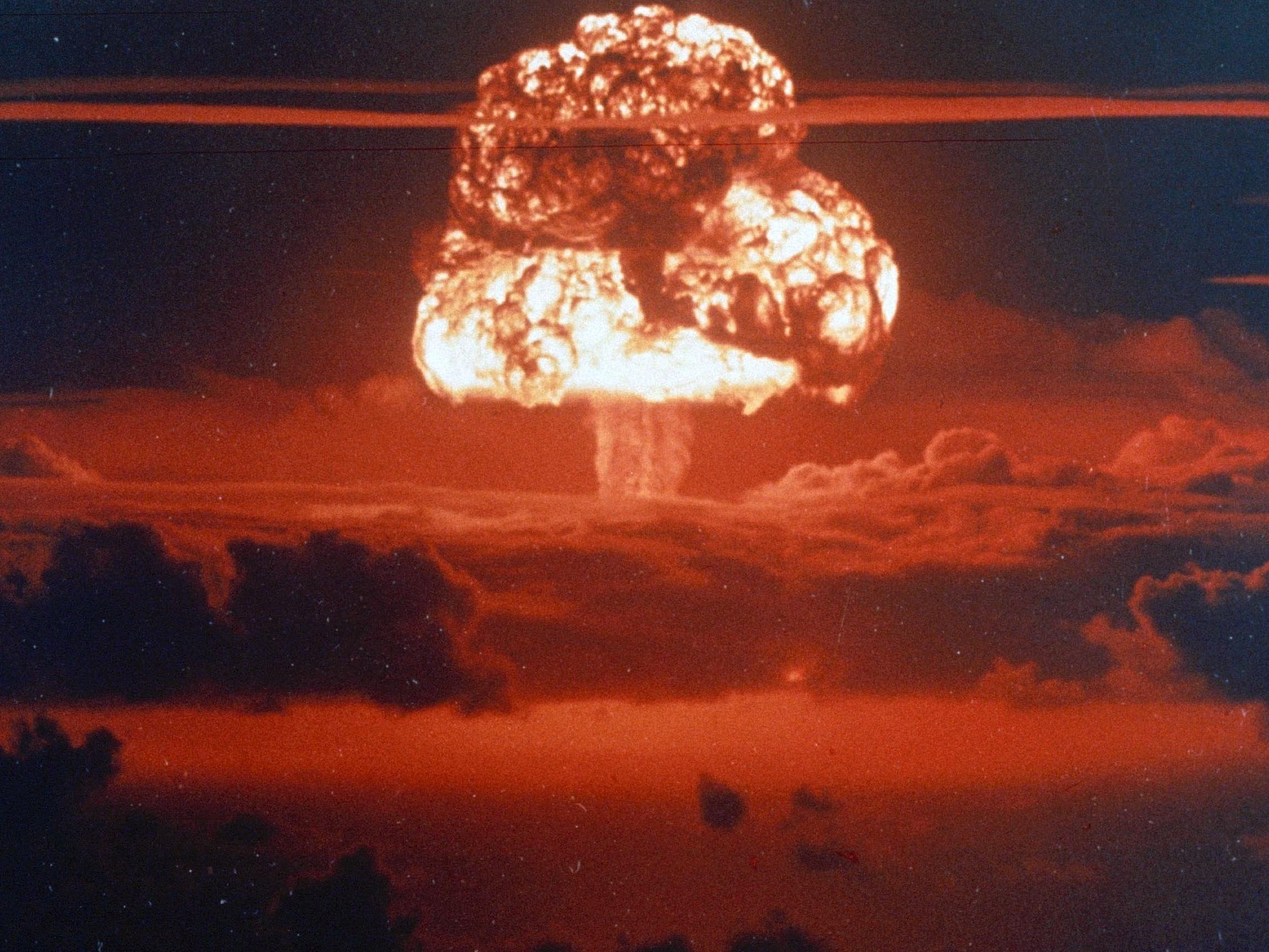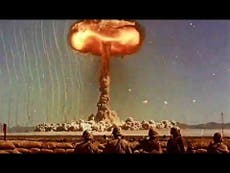Nuclear war is no longer the stuff of dystopian novellas – it's a very real and immediate threat
The Doomsday Clock shows we're closer to the apocalypse than we have been since the 1950s. Thanks to Trump's comments on climate change and nuclear arms, we should take it very seriously


Small unsettling things are also happening amid the giant upheavals of Trump-world, barely 10 days old but already built on the chaos theory of government and already crammed with willful ignorance and “alternative facts”.
George Orwell’s 1984 has shot to the top of Amazon bestseller list, while demand has surged for other dystopian novels such as Aldous Huxley’s Brave New World and Ray Bradbury’s Fahrenheit 451. And now there’s the Bulletin of the Atomic Scientists, and its Doomsday Clock, which shows how near we are to the apocalypse.
This week, the scientists who manipulate the device moved the hand 30 seconds closer to midnight. It now stands just two and a half minutes away, closer than at any time since 1953 when the US and the Soviet Union were developing rival hydrogen bombs.
Now the Doomsday Clock doesn’t just indicate the risk of thermonuclear war but anything else that might bring about humanity’s demise: disease, bio-warfare and most notably climate change. The two threats are closely related; climate change could easily bring about nuclear conflict, and vice versa. Most important however was the scientists’ observation that, for the first time ever, the decision had been taken “because of the statements of a single person”. Guess who.
Donald Trump’s campaign and pre-inauguration ruminations on nuclear arms – the promises to build up the US arsenal and ditch the Iran nuclear deal, the airy talk about a new arms race with Russia and how it might be OK if other countries got the bomb – have been buried by the torrent of controversies since he was sworn in. But the lesson of these last few days is that Trump the President is just like Trump the candidate. On matters nuclear it’s unlikely to be any different.
Worse still is the President’s indifference to verifiable fact, and a Republican Party readiness to play fast and loose with science that long predates him. In Bradbury’s Fahrenheit 451, set in an undetermined future, one of the characters remembers how “the word ‘intellectual’ became the swear word it deserved to be”.
And that’s the vibe emitted by this administration, whose probable Energy Secretary and head of the Environmental Protection Agency (EPA) are both sceptics about climate change – which Trump himself has famously called a Chinese hoax.
In the meantime he’s given the go-ahead to two contentious oil pipelines across the US that had been halted by President Obama, and imposed what looks suspiciously like gag orders on the EPA. Since last November, concerned scientists are said to have transferred vast quantities of government climate data to independent servers to ensure its preservation. Paranoid? Not if you take Trump and people like Scott Pruitt, his nominee to be EPA administrator, at their denialist, fact-trashing word.
But the nuclear threat is the most immediate. Alas, it hardly impinges on the public consciousness. The days when I had to check on the readiness of nuclear fall-out shelters in somewhat absurd fulfilment of my “military duties” at school are more than half a century ago.
The last truly scary film about nuclear war, a TV movie watched by 100 million terrified Americans called The Day After, dates back more than 30 years, to November 1983. By pure co-incidence, it appeared at almost the exact time Nato was conducting an exercise called Able Archer, so realistic that the Kremlin believed it to be the prelude to a first strike Western attack on the Soviet Union, and placed its own forces on top alert. Some experts still believe Able Archer provoked one of history’s closest brushes with nuclear holocaust. A couple of misread blips on a computer screen, at a moment when relations between the superpowers were at a nadir, and the worst might have happened.
But since then we’ve seen virtually nothing, despite some impassioned warnings from the likes of William Perry – mathematician, strategist, Defence Secretary under Bill Clinton, and arguably the wisest of America’s nuclear wise men – and President Obama’s 2009 speech, vowing to work towards a world rid of nuclear arms. The public response through was a collective shrug of the shoulders. Nuclear weapons hadn’t been used in anger since 1945; and if they were, that would be it for all of us. And anyhow, they couldn’t be un-invented. Better out of sight and out of mind.
Perry himself, who was a bit-part player in the Cuban missile crisis and lived through at least one computer “near miss”, once believed that by now, a quarter of a century after the end of the Cold War, the world would have moved past nuclear weapons. But it hasn’t, and in fact, he warns, the risk of their being used has never been greater.
That Russia and the US are beefing up their arsenals is the least of the dangers. More threatening are China’s build-up, the confrontation between nuclear-armed India and Pakistan, and an utterly rogue North Korea, soon perhaps with the capacity to hit the US with a nuclear-tipped intercontinental missile. Stir in Trump, with his rash statements, brawling style and shoot-from-the-hip temperament, and you have a problem.
Then of course there’s the terrorist threat. If the 9/11 terrorists had access to a crude nuclear weapon, rather than airplanes, they would have used it. And, living in a target city like Washington, sometimes you’re brought up hard against that fact.
Back in August 2011 a real and decent-sized earthquake hit the area. I’d been in earthquakes in Italy and Azerbaijan, and knew what they were like, how the ground shook for an eternity lasting a few seconds. I knew this was another. Even so, I ran out into the garden to see if some atomic cloud was rising over downtown DC. Mercifully, it wasn’t. But my action was utterly understandable – if not the recommended one in such circumstances. What was more likely in the US capital, even in those measured, now vanished Obama years? An earthquake stronger than any in a century here, or a terrorist nuclear incident? It was a no-brainer then. It’s even more of one now.



Join our commenting forum
Join thought-provoking conversations, follow other Independent readers and see their replies